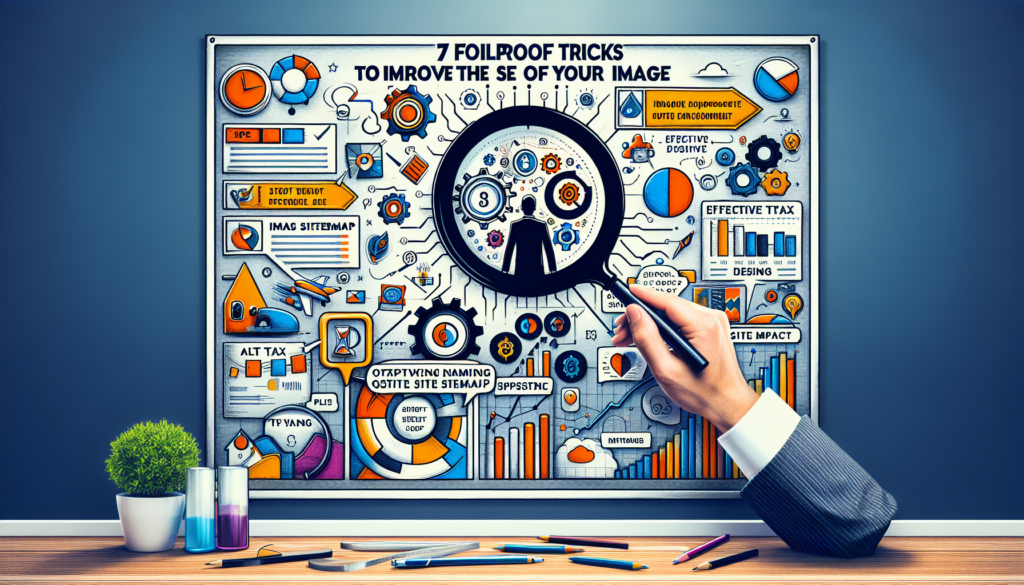In the contemporary digital era, search engine optimization (SEO) is not limited to text alone; images also play a crucial role in the positioning of content on the web. Given the relevance that Google and other search engines place on visual content, it is essential to implement advanced strategies that ensure images contribute to SEO effectively. This article breaks down seven foolproof techniques, supported by recent studies and best practices recommended by experts, to enhance SEO through image optimization.
Importance of Image Optimization in SEO
Before delving into the strategies, it’s important to understand that Google Images accounts for a significant portion of the traffic that reaches websites. Additionally, with Artificial Intelligence (AI) and Machine Learning, Google is increasingly better at understanding visual content, which amplifies the importance of well-optimized images for SEO.
Trick 1: Selection and Relevance of Visual Content
The first step in effective image optimization is choosing relevant graphics. Quality and relevance should go hand in hand; images must clearly illustrate the content they accompany.
Case Study: A correlation analysis by Moz identified that highly relevant images improve engagement metrics on the page, a positive signal for search algorithms.
Trick 2: Using Keywords in File Names and Alternative Texts
An image’s file name should be descriptive and include keywords that reflect the content’s theme. Similarly, the alt attribute (alternative text) is crucial, as it allows search engines to understand the image content.
Suggested Practice: By using specific keywords in alternative texts, we increase the likelihood of appearing in related searches, thereby improving SEO.
Trick 3: Compress Images Without Sacrificing Quality
The file size of an image directly affects the page’s loading speed, an important factor in SEO. Using compression tools to reduce file weight while maintaining high visual quality is essential.
Recommended Tools: Services like TinyPNG or the use of modern formats like WebP offer significant compression without a noticeable decrease in visual quality.
Trick 4: Proper Use of Image Tags and HTML Structure
The HTML structure surrounding an image also matters. Tags like
Professional Tip: Implement microdata or JSON-LD through schema.org for images that provide additional structured information, such as the rating of a recipe or the creator of a piece of art.
Trick 5: Making the Most of Image Attributes
Attributes such as title (title), description (longdesc), and link tags (a href) play an important role in accessibility and can influence SEO.
SEO Trends: Web accessibility is becoming a more relevant factor, and properly tagged images contribute significantly to this aspect.
Trick 6: Creating and Optimizing the Image Sitemap
Image sitemaps are crucial for search engines to discover all the images on a site. Make sure to include all relevant details in the image sitemap to improve its indexing.
Good Practice: Use tools like Google Search Console to monitor how images are performing in search results and refine the sitemap as necessary.
Trick 7: Exploring the Potential of Lazy Loading
Using the Lazy Loading technique allows images to load only when they are about to be viewed by the user, which can improve page load time.
Important Update: Since the Google algorithm update in 2020, which introduced the Core Web Vitals metric, loading speed and improvements in page interactivity have become more influential in SEO, making Lazy Loading a valuable technique.
With meticulous implementation of these tricks, any website can significantly improve the SEO optimization of its images, which in turn can translate into better positioning in search engines and, ultimately, an increase in organic traffic. Each image offers an opportunity to maximize a site’s visibility; however, the key lies in consistency and technical precision when applying these strategies. Images not only enrich content but can also become a strategic vehicle for advanced and effective SEO.

